GLC Report From Kurdistan: Finding Your Neighbor on Sinjar Mountain
June 2015Kurdistan, Iraq
“Everyone ran, it was crazy, everyone in the village. We couldn’t take anything, some families got separated…It was 2:30am when the mortars started to fall, but no one was sleeping that night so we all ran right away…”. Neam is a young mother of ten children; she and her family lived in a village near Sinjar Mountain, farmers and shepherds with a centuries-old connection to this land. “There was nowhere to run but up the mountain. The enemy was all around the city.” We had heard that some of her children had been captured so are relieved when she says, “My whole family made it. All of my children are here with me.” Then we ask if everyone in the village made it, are they all here together?
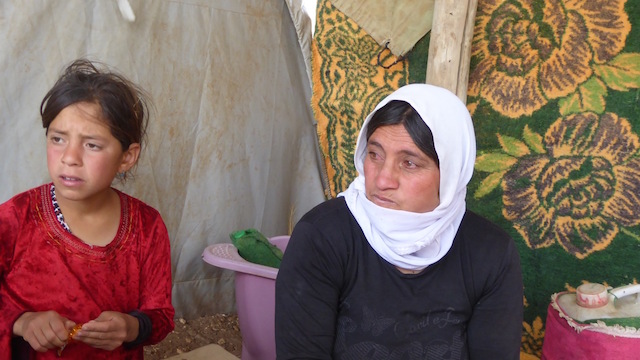
“No. They killed my brother. He was 25. He went back to get food. He had no choice, we had no food here, so he tried to go back to our home to find food and they killed him. They killed my nephew too, he was only 16.” Tears come to her eyes and she covers her face with her scarf. A group of 15 men had gone together after the first few days to try to retrieve food but never made it. Neam’s brother and nephew were killed along with others, and several of the group were wounded. One of her children disappears into a tent and emerges with the brother’s wedding picture. His name is Amie. It’s now been ten months since he died, sacrificing his life for his family. She says that day was the hardest day.
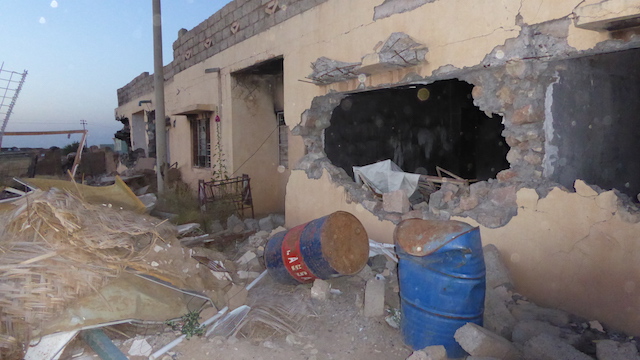
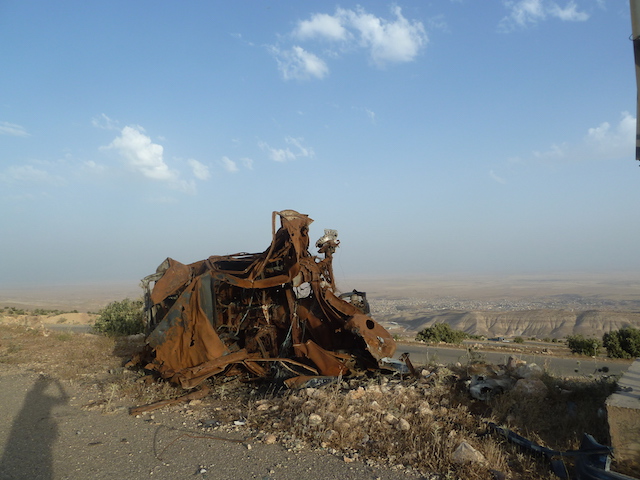
Sinjar Mountain, where these families have lived for nearly a year now, is bare, rocky, wind-whipped, rising suddenly from the brown and dusty plains of northwestern Kurdistan that surround it. Sinjar City spreads out across the plains at the southeastern base of the mountain, about 20 km from the Syrian border. In August 2014, ISIS took Sinjar City, the home of fifty thousand mostly Yazidi people. ISIS didn’t stop there, but tried to take the mountain, driving thousands of the city’s residents before them. They pushed to within a few kilometers of the top; then were stopped by the Kurdish Army, called the Peshmerga, and other forces. ISIS surrounded the mountain, capturing all the towns around it and leaving a swath of destruction in their wake. The majority of the more than 40,000 IDPs stuck on the mountain escaped in the first two weeks when a major coalition push broke through the ISIS lines. Some 8,000 Yazidis stayed, as they did not want to move any further from their homes or were afraid they wouldn’t survive the long walk to the Syrian border; Neam’s family was among them. But the ISIS ranks again closed around the mountain and the fighting continued; the Peshmerga and allied fighters on top of the mountain held on, but there was little help from the outside.
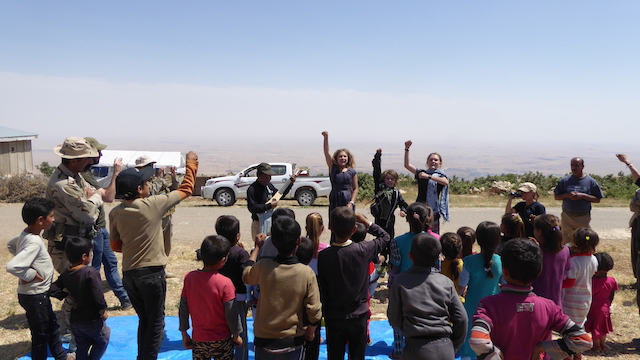
The thousands of people still on the mountain, including Neam and her family, struggled to survive through the dry months of the fall and then winter, when freezing rain and snow came. Many didn’t. They battled thirst, hunger and exposure. Humanitarian assistance came by air, but it was not enough and Sinjar made international headlines as a place of desperation and misery. The Peshmerga and their allies held off ISIS and finally, in December 2014, with help from coalition air forces, were able to break the siege and push ISIS back to Sinjar City. Today, ISIS still controls most of the city and their black flags fly over the highest points. In scattered bleak tent encampments on the mountain the displaced Yazidi families can watch as their homes are gradually pulverized in the daily (and nightly) fighting.
Here, firefights, airstrikes, shelling, happen on a daily basis. Kids programs do not. The people did not know what to expect as we gathered the children of one of the camps, situated on a ridge looking straight down at Sinjar City and the surrounding villages, their homes; in the distance is Syria. The families here live mostly in wall tents provided months ago by the Barzani Foundation (of Kurdistan), UNHCR, and other organizations. We find a flat spot, mostly free of rocks and thistles, and start our program. We’re here for the kids and start by getting to know them; they’re happy to shake our hands and say hello. A Peshmerga sergeant major with a giant handlebar mustache, a pistol and some magazines in his belt, helps translate. We teach “good morning” in English, and “friend”. Sahale, Suuzanne and Peter adapt a Karen language song to “Yazidis lead the way” and sing with Monkey, our Karen pastor. We introduce ourselves, taking some time to explain whwere Burma is, sing songs, then perform the Good Samaritan drama. ISIS (or Daesh, as they are known here) is cast in the bandit role. The children in unison say, “We’re not afraid of Daesh!” – then, when the Daesh attack our innocent traveler (Peter), they all, as if on cue, shoot them with air guns. In this place of many groups and parties, the lesson is that the one who helps you is your neighbor – no matter who it is.
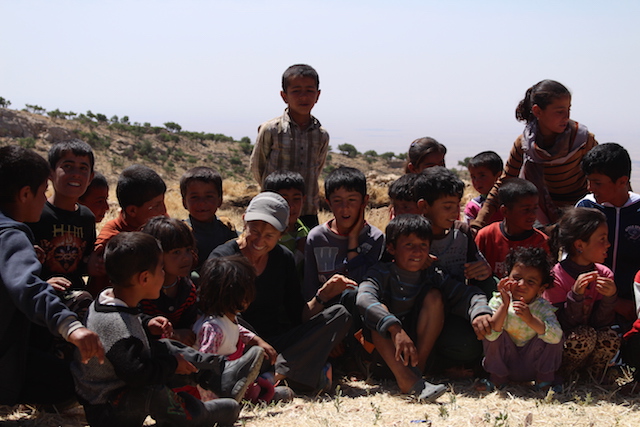
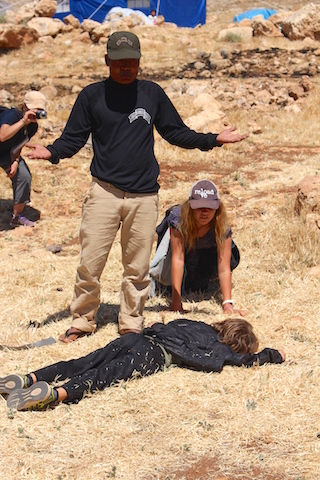
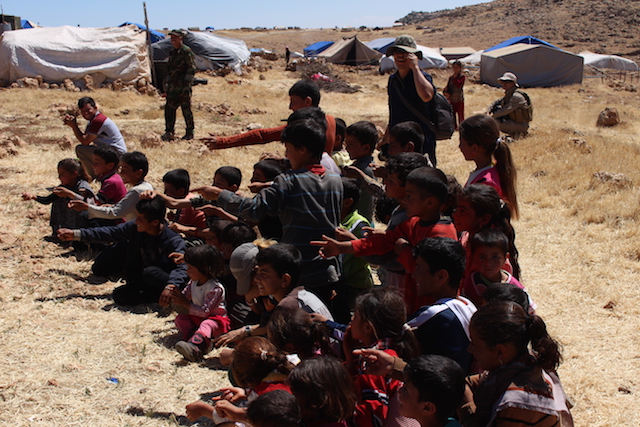
The children aren’t shy – they sing with enthusiasm, laugh at the drama and crowd around for the health care lesson. We share about God’s love and give them a bracelet of colored beads representing the gospel to remind them, first, that God loves them and they can always ask Him for help and secondly, that many people around the world are praying for them.
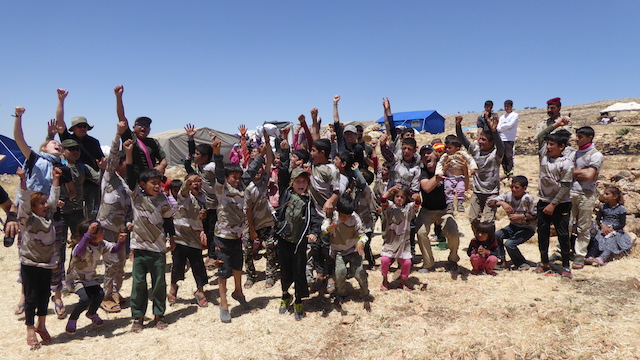
We do three programs on Sinjar, in three different camps. The children are all young, mostly under 12 years old, and there are very few adults around. We ask if they are here with their families. The leaders say, yes, the mothers are here and fathers are all on the frontlines.
Earlier we interviewed the soldiers at a checkpoint a few kilometers off the frontline and met a 12-year-old boy who was visiting his father. ISIS had captured his uncle when they took the city, along with several thousand other hostages. They don’t know if he is dead or alive. These soldiers, part of the Peshmerga, were all from Sinjar City and joined to be in the fight: “We will fight until we die to get our city back.” They are Yazidi, and this alliance with the Peshmerga is new, it is a real-life Good Samaritan story and is one of the only positive things to come from the catastrophe of ISIS’s attacks.
We finish our program with a Karen song praying God’s blessing on them until we meet again. Our three Karen team members, Monkey, Eliya and Ray Kaw, lead us in singing. Standing there in front of the children, they are what Jesus meant when he talked about “good neighbors” – he wasn’t talking about location or identity, he was talking about action. Later in the Bible, Paul says the same thing specifically: “What can separate us from the love of God?” – and the answer is nothing – no distance, no history, no ethnicity. Neither can anything stop us from being the love of God – no oppression, no history, or distance. So we are thankful for the opportunity to be here despite many obstacles, and we pray for the vision and courage to be God’s love here. We also pray that Neam, her family, and all those displaced with her can return home.
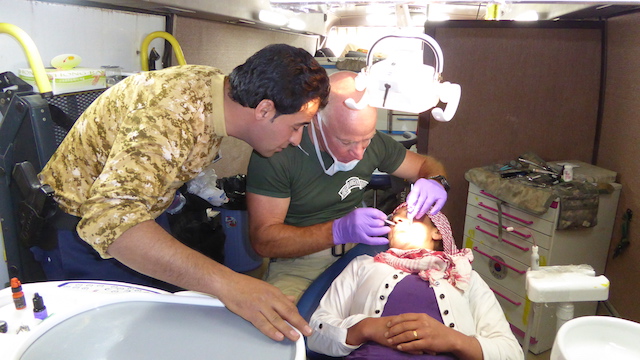
Thank you for your part in this.
God bless you,
The Free Burma Rangers, in Kurdistan
